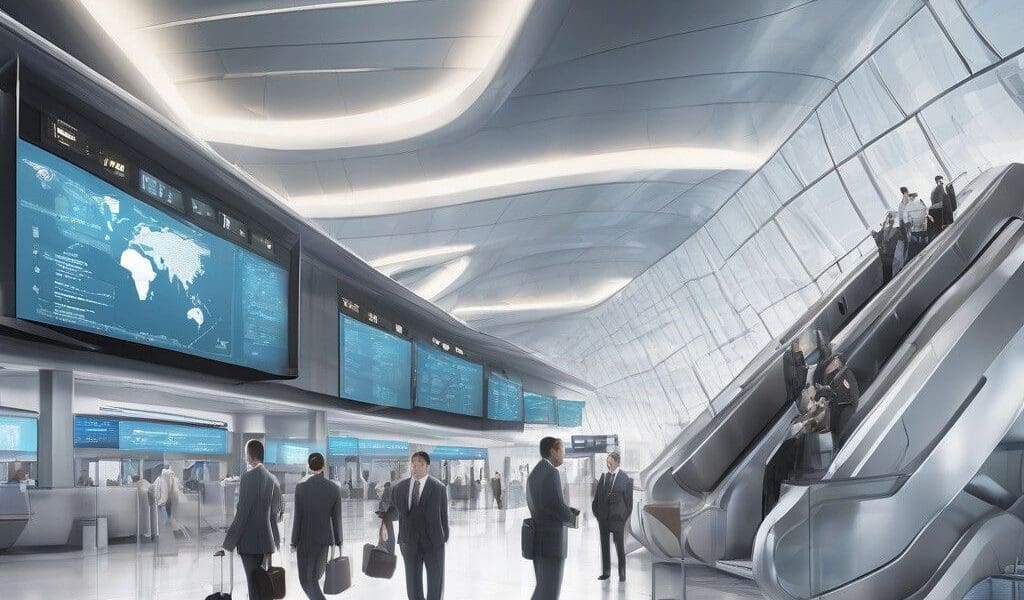SITA Launches Advanced NAC Solution for Enhanced Airport Security
In an era where digital threats loom large, SITA has unveiled its Managed NAC (Network Access Control) solution, tailored explicitly to fortify airport and airline digital infrastructures. This advancement targets the ever-growing risks associated with digital networks, particularly in the complex environments of airports—vital hubs for global connectivity.
Understanding Network Access Control (NAC)
Network Access Control serves as a critical component of cybersecurity. It ensures that only authorized devices can access network resources while often providing detailed monitoring and management capabilities. The new solution from SITA enhances this premise, promising to bolster security and operational efficiency in aviation—an industry constantly challenged by cyber threats.
Key Features of SITA Managed NAC
SITA’s Managed NAC solution integrates sophisticated features aimed at optimizing both safety and compliance.
1. Enhanced Identification Checks: The solution incorporates multiple layers of identification, which further strengthens user verification processes. These checks are pivotal in safeguarding passenger systems against unauthorized access.
2. Network Segmentation: By segmenting networks, SITA Managed NAC creates different zones of security, minimizing the risk that a breach in one area could compromise the entire system. This segmentation is crucial in maintaining the integrity of sensitive communication systems vital for airline operations.
3. Compliance with Industry Standards: The solution is designed to meet stringent guidelines from regulatory bodies such as the US Transportation Security Agency (TSA) and Airports Council International (ACI). By adhering closely to these standards, airports and airlines can significantly reduce audit risks and operational liabilities.
4. Granular Control and Logging Capabilities: SITA Managed NAC allows for detailed monitoring of device access. IT teams can log and monitor all access attempts—permitted or not. Additionally, the solution enables the quarantine of non-compliant devices, ensuring they cannot disrupt operations or compromise security.
5. Integration with Existing Solutions: The NAC system seamlessly integrates with SITA’s Campus Network product. Utilizing Cisco’s Identity Services Engine (ISE), it enables a unified approach to managing identities and enforcing access controls across the network.
6. Adoption of a Zero Trust Security Model: Emphasizing continuous authentication, the Zero Trust model reduces the risk of unauthorized access. This approach insists that every access attempt is verified, regardless of whether the user is inside or outside the network perimeter.
The Importance of Cybersecurity in Aviation
With the rise of interconnected systems in airports, the importance of robust cybersecurity solutions cannot be overstated. Airports are increasingly reliant on technology to manage everything from check-ins to air traffic control. Any disruption due to a cyber incident can have cascading effects, threatening not only data integrity but also passenger peace of mind.
The stakes are particularly high given the aviation sector’s historical vulnerabilities. According to a report by the International Air Transport Association, airports and airlines face about 4000 cyberattacks daily. Therefore, solutions like SITA Managed NAC are more than just a technological upgrade; they represent a necessary evolution in protecting critical infrastructure against ever-evolving threats.
Industry Reception and Future Prospects
The introduction of SITA Managed NAC has garnered positive feedback from industry experts. Many view it as a timely response to growing cyber threats that plague the aviation sector. With rigorous standards and real-time monitoring, SITA’s solution not only addresses current needs but also lays groundwork for future advancements.
Moreover, as the digital landscape continues to expand, SITA’s proactive approach places it ahead of the curve in terms of cybersecurity. With technologies advancing rapidly, ongoing innovations in NAC solutions will be essential in adapting to future threats.
Conclusion
SITA’s Managed NAC represents a significant step towards enhancing airport security in an increasingly digital world. By ensuring strict compliance, offering granular control, and implementing cutting-edge cybersecurity practices, the aviation industry can better safeguard its operations and passenger safety.
In a landscape where the risks associated with cyber threats escalate daily, solutions like SITA Managed NAC are not just beneficial—they are indispensable for maintaining the integrity of critical airport infrastructure.








